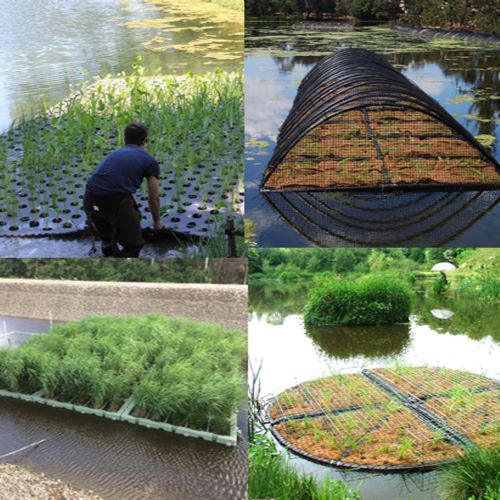01 October 2025
 A new international study has endorsed artificial floating wetlands as a sustainable and cost-effective solution for improving water quality in rivers, lakes and wastewater systems.
A new international study has endorsed artificial floating wetlands as a sustainable and cost-effective solution for improving water quality in rivers, lakes and wastewater systems.
Led by scientists from Australia’s national science agency CSIRO and the University of South Australia, the team of researchers analysed 11 international constructed floating wetlands (CFW) projects in Australia, Pakistan, Canada and the USA.
Artificial or constructed floating wetlands involve planting wetland vegetation on floating rafts, mimicking a natural ecosystem that removes nutrients, sediments and other pollutants from the host water body.
The researchers found that capital costs for floating wetlands ranged from as little as A$22 per square metre, to more than A$3800 per square metre, depending on design, location and purpose.
Operating costs varied from A$0.76 to A$274 per square metre each year.
Lead author, CSIRO Research Engineer and UniSA Adjunct Research Fellow Dr John Awad, says the findings will help councils, utilities and water managers better understand the economic feasibility of floating wetlands compared to conventional treatment systems which use physical, chemical and biological processes.
“Floating wetlands mimic the functions of natural ecosystems, filtering nutrients and pollutants through plant roots and microbial communities,” Dr Awad says.
“But until now, there’s been limited data on what they actually cost to build, maintain and operate at scale. Our study shows that while costs vary, floating wetlands can be competitive with other engineering treatment options, especially for nitrogen removal.”
On average, the cost of removing nitrogen was between A$15 and A$183 per kilogram – consistently cheaper than removing phosphorus, which ranged from $A23 to A$4979 per kilogram.
“Scale matters,” says Dr Awad. “Larger wetlands reduced the cost per kilogram of nutrients removed, making them more economical over time. Climate also plays a role. Wetlands in warmer regions had longer growing seasons and higher pollutant removal rates.”
Floating wetlands are increasingly being trialled to treat domestic wastewater, stormwater and polluted urban rivers.
In Australia, schemes in the Sunshine Coast region and Victoria have targeted wastewater and stormwater, while projects in the United States have incorporated community spaces, ecological restoration and even floating boardwalks.
Study co-author, UniSA Professor Simon Beecham, says the technology has added advantages beyond water quality.
“Floating wetlands can be retrofitted into existing lakes and stormwater ponds without the need for costly land acquisition,” Prof Beecham says.
“They also provide habitat for birds and aquatic life, improve urban amenity, and may even contribute to carbon sequestration.”
The research team highlighted significant cost differences between projects in developed and developing countries. For example, wetlands built in Pakistan cost just A$13-20 per square metre – a fraction of the expense in Australia and North America – due to lower labour and material costs.
“Understanding these variations helps governments and planners adapt the technology to local conditions,” according to Dr Awad.
“It also shows that floating wetlands could be a particularly valuable option in low- and middle-income countries, where affordable, low-energy treatment systems are urgently needed.”
The authors say floating wetlands are not a silver bullet but should be considered as part of a broader suite of water treatment options.
‘Assessing the costs of constructed floating wetlands for the treatment of surface waters and wastewater’ is published in ACS ES&T Water. DOI: 10.1021/acsestwater.5c00439
…………………………………………………………………………………………………………………………
Researcher contacts: Dr John Awad E: media@csiro.au; Professor Simon Beecham
E: Simon.Beecham@unisa.edu.au
Media contact: Candy Gibson M: +61 434 605 142 E: Candy.Gibson@unisa.edu.au




